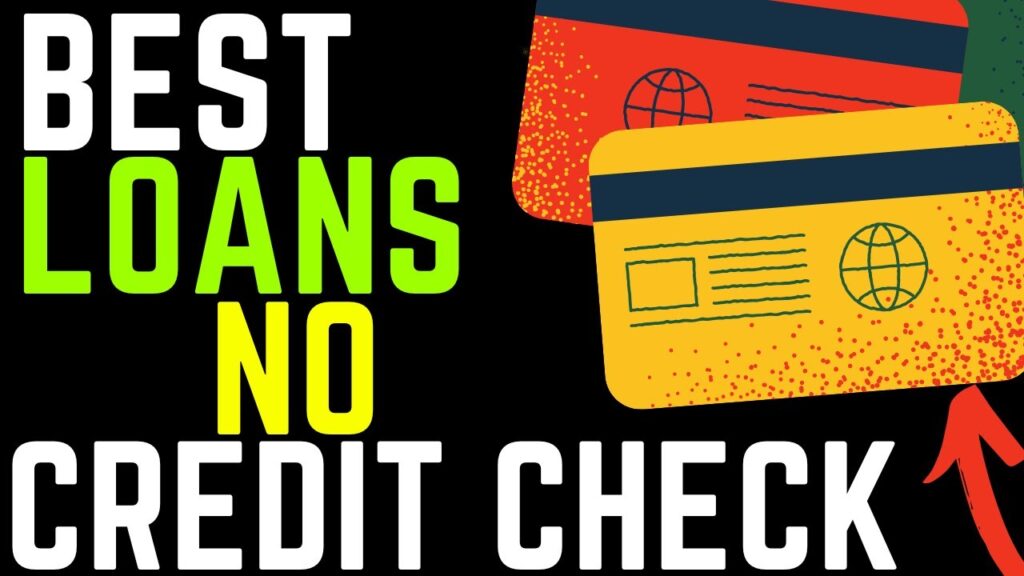Understanding Personal Loans
Understanding Personal Loans Personal loans allow borrowers to obtain a fixed amount of money, to be repaid with interest over a predefined period in regular installments. Personal loans can consolidate debt, finance major purchases or expenses, and more. In this comprehensive guide, we’ll cover all you need to know about these useful financing instruments.
What is a Personal Loan and How Does It Work
A personal loan provides an upfront lump sum payment in exchange for an agreement to repay the money monthly over a set period.
- Borrowers apply and are vetted by lenders based on criteria like income, credit score, and current debt obligations
- If approved, the borrower receives the total loan amount upfront as a direct bank deposit, with a repayment schedule spanning typically 2 to 7 years
- Monthly loan repayments comprise both principal reduction and accrued interest charges
- Depending on the lender and the financial profile of the applicant, interest rates on loans can range anywhere from 5% on the low end up to 36% on the high end.
- Failure to make payments results in penalties, increased interest rates, and damage to applicant’s credit score
Personal Loans vs Other Credit Types
Personal loans differ from auto loans, mortgages, and lines of credit in key ways:
They are unsecured by assets – approval is tied to applicant earnings and creditworthiness rather than collateral. This provides faster access to funds but limits maximum eligible amounts versus secured installment options. Offers fixed interest rates – monthly installments paying down principal plus interest charges remain constant over the loan term, allowing reliable repayment budgeting. Flexible spending – borrowers can use funds for any purpose without restrictions. This versatility expands potential use cases relative to the narrowed vehicle, home, or credit line funding.
Common Uses for Personal Loans
A few popular uses of personal loan financing include:
Debt Consolidation
Borrowers can roll multiple debts like credit cards or payday loans into personal loans at lower interest rates to simplify repayments. This allows them to save money while eliminating debts faster. Careful cost-benefit analysis required to ensure rate reduction versus origination and administration fees make consolidation advisable.
Major Purchases
Personal loans enable financing big-ticket items like home renovations, medical procedures, weddings, international holidays, or educational tuition. Large singular expenses are easier to budget for under a fixed installment repayment structure.
Emergency Expenses
The lump sum can provide relief after unexpected costs like temporary job loss, supporting family members, or replacing a broken-down vehicle critical for work commutes. Rapid funding delivery is crucial in pressing needs situations.
Improving Credit Scores
Responsibly taking out and repaying a personal loan illustrates creditworthiness and lifts credit scores, allowing improved approval odds and interest rates for future lending applications. This requires prudent borrowing and money management discipline.
Special Features of Personal Loans
No Collateral or Proof of Purpose Required
The unsecured nature of personal loans overlooks collateral while providing access to funding more swiftly relative to secured financing options. Applicants rarely have to document how they plan to spend the borrowed sums. Eliminating these frictions enables urgent or private funding needs.
Fixed Interest Rates Through Loan Terms
Set interest levied means monthly repayments don’t fluctuate unexpectedly over the repayment period. This allows borrowers to budget for the financing accurately without rate spike surprises.
No Prepayment Penalties
If funds allow, borrowers can pay more than mandatory installments to repay balances quicker with no lender penalties. However, no option to drawback from approved sums means borrowers should only apply for necessary amounts. Prepayment flexibility allows repayment acceleration and interest cost savings.

Alternative Repayment Options
As part of understanding how personal loans work, it’s important to know that while fixed monthly payments are standard, some lenders cater to consumer needs through alternative repayment structures. Options like bi-weekly or semi-monthly installments allow more frequent payments, reducing total interest costs over the loan term. This flexibility aligns with how personal loans work – providing accessible financing tailored to diverse borrower profiles, with customizable payment plans to match specific cash flow preferences.
Responsible Borrowing Critical
Understanding how personal loans work means recognizing that while they deliver vital lump sum financing, reckless borrowing can overwhelm limited budgets. Those facing expenses exceeding income or mounting debt must address core financial issues before taking on new liabilities through loans. Comparing terms from multiple lenders remains essential to finding affordable options suited to repayment ability. Responsible borrowing works hand-in-hand with how personal loans work best by aligning loan amounts and terms to realistic budgets and money management.
Potential Downsides
When weighing personal loan pros and cons, it’s vital to consider potential downsides. Those with poor credit may need to accept high-interest rates or strict repayment terms to qualify – key aspects dictating personal loan how and when payments must be made. Additionally, failing to repay properly damages credit profiles which reduces chances for affordable rate approvals on future auto loans, mortgages, or other lending needs. Factoring this personal loan and how risks regarding rates, terms, approvals, and credit impact into borrowing decisions is prudent.
Applying for Personal Loans
Qualifying for Approval
When reviewing applicants, lenders assess earnings consistency, credit score, history of meeting past debt obligations, and capacity to take on additional financing. Maintaining income and a credit score above 580 improves underwriting outcomes. Debt-to-income ratios below 35% also help.
Loan Amount Eligibility
General thresholds span $1,000 to $100,000 in possible personal loan sums but maximums depend heavily on lender and borrower criteria. Approved amounts based on income, existing obligations, credit history, and requested loan tenure. Excellent profiles may access six figures but differ widely case by case.
Interest Rates
Better credit correlated to interest rates as low as 5%, extending to 10-15% for fair credit applicants and up to 30-35% for bad credit channels. However, all applicants face rate uncertainty amid economic fluctuations and base pricing approaches differing by institutions. Shopping and negotiating rates are prudent.
Repayment Timeline
Standard personal loan terms last around 3-5 years. Bad credit borrowers face shorter 2-3 year repayment structures, while good credit means eligibility for longer 6-7 year periods to distribute financial impact over time. Maximizing tenure improves payment affordability through time but raises interest costs.
Key Takeaways
Personal loans provide unrestricted lump sum financing to consumers at pre-set interest rates and terms. Rate pre-sets enable fixed repayment budgeting but economic shifts alter baseline pricing. Ideal for debt consolidation, major purchases, unanticipated bills, or credit profile lift. Broad use case versatility creates widespread appeal.
Qualifying is tied to income reliability, credit scores, and debt-to-income percentages but specific requirements vary across lenders. Prudent shopping is required. Comparing rates across lenders and cosigner inclusion lowers interest costs. Existing debt and repayment history also sway pricing.
Meet monthly payments diligently to avoid penalties and sustain access to affordable future financing. Repayment discipline is critical for both loan resolution and enduring creditworthiness.
Understanding the mechanics of personal lending enables savvy borrowing decisions tailored to your needs and situation. Apply the guidance covered here as you evaluate and choose loan offers that provide the most value while managing risks.
Disclaimers: The information is for general purposes only and not financial advice. While consolidation can save money through lower interest rates, it’s important to mention that origination and other fees might offset the benefit. Emphasize the need for careful cost-benefit analysis. The borrowers should emphasize responsible borrowing and comparing terms from multiple lenders that empower better decision
What are personal loans used for?
Personal loans provide lump-sum financing that borrowers can use flexibly for debt consolidation, major purchases, emergencies, or other needs. A key benefit is their versatility – you receive the loan upfront in a single payment, then repay it in fixed installments over 2-7 years. This structure allows personal loans to fund diverse economic necessities, from consolidating credit card debt to financing a dream wedding. Their flexibility and accessibility are central to how personal loans work.
How do personal loans differ from other credit types?
Unlike mortgages or auto loans, personal loans do not require collateral and allow flexible usage without restrictions. This speaks to a core element of how personal loans work – you receive an upfront lump sum payment with fixed interest rates and terms, typically 2-7 years, which must be repaid in regular installments. Their unsecured nature and accessible approval process facilitate urgent funding needs or major purchases without limitations on spending.
What factors determine personal loan eligibility?
As part of how personal loans work, lenders assess eligibility based on criteria like income consistency, credit history, existing debt burdens, and the ability to manage additional installments. They want to confirm applicants can repay the upfront lump sum they receive as part of the personal loan structure that requires fixed repayments over typically 2-7 years. Meeting key thresholds for earnings, credit scores, and debt-to-income ratios improves the chances for approval and better loan terms.
Can personal loan amounts be used for any purpose?
Yes, a hallmark of how personal loans work is the flexible spending they allow – borrowers can use the lump sum payment for any purpose without restrictions. Whether it’s consolidating credit card debt, financing home renovations, or covering emergency costs, personal loans do not limit usage. This versatile, accessible funding defines the personal loan structure that simply requires fixed repayments over a set 2-7-year term after dispensing the upfront amount.
How long is the typical repayment timeline for personal loans?
A key part of how personal loans work is the defined repayment structure – borrowers must pay back the upfront lump sum along fixed timelines, usually between 2-7 years. Those with excellent credit sometimes qualify for 6-7-year terms to distribute the financial impact over an extended period. But a hallmark of personal loans is fitting repayment to the borrower’s profile and needs, as evident by the flexible 2-7 year range.

